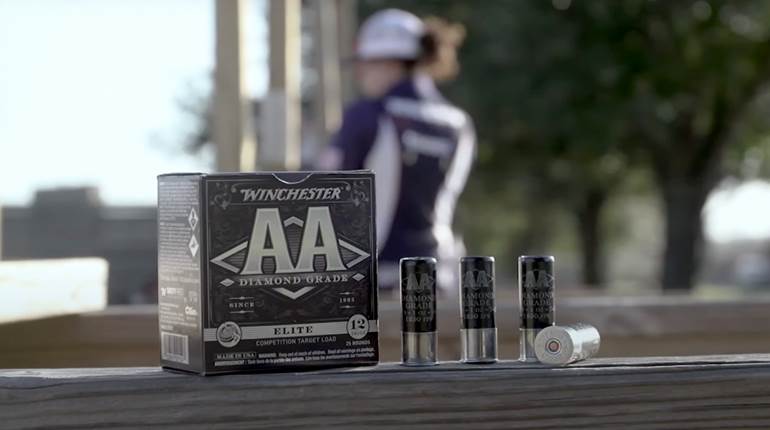"The RPD was actually developed during the Second World War, but the war ended before large-scale production could begin on the weapon," American Rifleman Field Editor Martin K.A. Morgan said. "The RPD is a gas-operated, belt-fed, squad automatic weapon. It feeds from a non disintegrating metallic link built that is kept inside of a drum-shaped belt holder. It weighs in at about 16 pounds, so it's a lightweight belt-fed squad automatic weapon. It would have really changed the way that the Soviet military was fighting in World War II, but the war ended before the weapon could be put to any use."
The initial model, as designed by Vasily Degtyaryov, completed trials and was accepted in 1944, though no significant numbers of cartridges were produced. At the time, the M43 cartridge was of a different design than the post-war intermediate cartridge popular today, having a 41 mm case length and a short bullet with no boat tail. In 1947, the cartridge was modified into the now-common 7.62x39 mm, and the RPD began production in the late 1940s.
"Vasily Degtyaryov was the John Browning of Russia. He was the great granddaddy of Russian machine guns," Firearm Historian Michael Parker said. "It's interesting. Every designer has kind of a favorite idea. Degtyaryov's idea was flaps. He had a thing with flaps. His locking systems all involved movable flaps that operated horizontally. They were mounted in the bolt, and the bolt rode in a carrier, and then the bolt would run forward and chamber a cartridge. The carrier would be right behind it, and a wedge on the carrier would push these two flaps out to the left and to the right into recesses that were machined in the side of the receiver. That was the locking system, and he used that continuously, and it proved to be very reliable."
Firing from an open bolt, the RPD featured a simple, reliable mechanism that was capable of automatic operation only. The bolt itself feature a spring-loaded extraction system, and the gun included a manual safety lever that prevented the gun from firing by locking the bolt catch in place. The RPD features an adjustable gas system with three performance settings.
"The machine gun would break down into five very basic components, and it was easily taken down like many of Russian weapons," Firearm Historian Kenneth Smith-Christmas said. "It had a chrome-lined chamber and chrome-lined barrel, and this helped quite a bit if the weapon went any time between repeated cleanings."
Despite its rugged, reliable design, the RPD did not serve long in first-tier units in the USSR and other Warsaw Pact nations. Starting in the 1960s, the RPD began to be replaced by the RPK and PKM machine guns based on the Kalashnikov design popularized by the AK-47. Despite its obsolescence, the RPD continued to see service across the world, adopted by China as the Type 56 light machine gun, and the machine gun saw prominent use in some of the largest conflicts of the 20th century.
"During the Cold War, the weapon is placed into production by a number of Soviet Bloc nations. Of course, the Soviet Union produces it, but in addition to them, the Poles, the North Koreans, the Chinese and the Egyptians manufacture derivatives of the RPD," Morgan said. "It's probably best known for its service during the war in Vietnam, where the Vietcong and then the North Vietnamese Army make extensive use of the RPD light machine gun, and they find it to be an extremely effective weapon."
Even though the RPD machine gun saw service in some of the most inhospitable climates on Earth, the gun was not without its criticisms. Many users point to the drum magazine as a weakness in several respects. The cartridges rattle around inside the drum during movement, which can give away operators before they open fire. The drum is also said to be unreliable in dirty environments.
"It does not have a quick-change barrel, which is often leveled as a criticism of that gun by by a great many foreign observers," Parker said. "I'm not sure that anybody who actually used the gun felt that that was a serious problem. In my own experience, I think the dirtiest machine gun I ever had a chance to shoot was an RPD, and it worked flawlessly. It was filled with muck, and it still shot."
For more information on the Russian RPD light machine gun, watch our "I Have This Old Gun" video above.
























